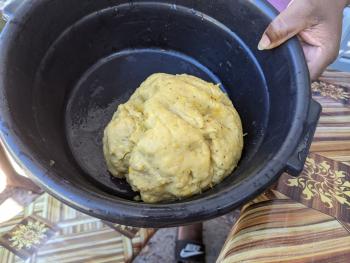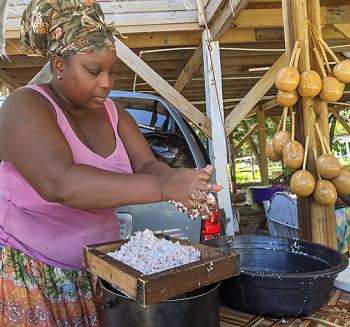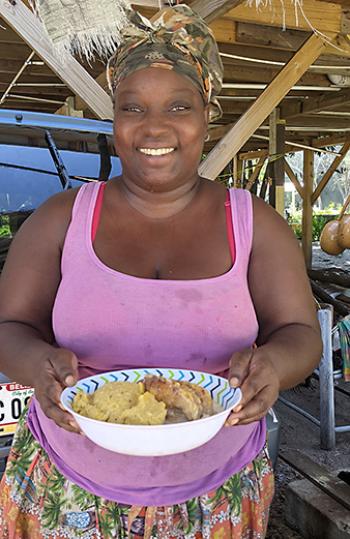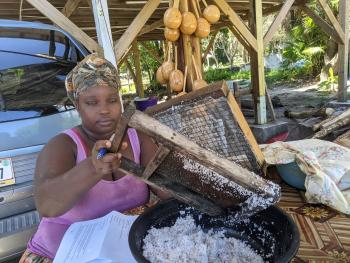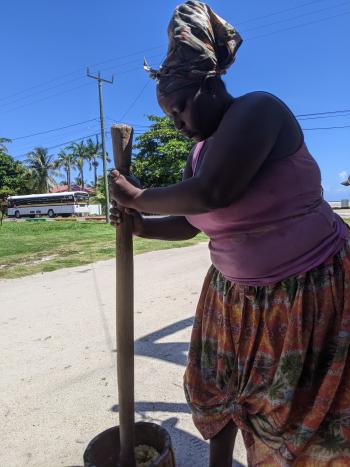What’s Cooking in… Belize
This item appears on page 18 of the April 2022 issue.
In October 2021 I booked a trip to Belize. Why Belize, you may ask? An internet search showed that Belize was proactive in protecting people from COVID. Not only did visitors have to show a COVID-free test on arrival, they had to stay in COVID-compliant hotels. Face masks, social distancing and curfews were mandatory.
From the list of approved hotels (www.travelbelize.org/health-safety), I chose The Placencia (Mile 13 Placencia Rd., Placencia, Belize; 877/417-9179, theplacencia.com), of Muy’Ono Resorts.
Each guest can arrange transportation between the airport and the hotel (100 miles); round trip, a van ride costs $150 (three hours) and a small-plane flight costs $265 (45 minutes). For two weeks in a Master Suite with an ocean view and balcony, I paid $2,350, and the price included a van to the hotel and a plane back to the airport.
Before leaving home, I contacted Taste Belize Food & Culture Tours (phone +501 664 8699, tastebelize.com) and booked a private cooking class. I chose to make a traditional recipe of the Garínagu (also known as Garífuna) people.
The Garínagu are descendants of West Africans who escaped from a slave ship that wrecked off the island of St. Vincent and of the indigenous Carib people from the island. To escape persecution, they later fled to Central America. Today the Garínagu live in small towns on the Caribbean coast from Belize to Nicaragua. While most speak English, they have their own language and a distinctive culture.
In terms of cuisine, there are two main staples in almost all Garífuna foods: green plantains and coconut milk. Many Garífuna dishes also make abundant use of ingredients like garlic and black pepper. These flavors lend themselves to dishes that are sweet, spicy, creamy and slightly bitter all at once. Hudut, a traditional Garífuna recipe, is no exception to this rule.
For the class, I went to the home of Kimberly Nuñez and Austin Sanchez, where they made Hudut the traditional way. Kimberly manually mashed the plantains with a pounding stick in a large wooden mortar and strained the coconuts by hand to produce coconut milk, but I have offered some easier alternatives below.
Sandra Scott can be reached by email at sanscott@gmail.com.
4 green plantains, peeled
1 ripe plantain, peeled
Medium-size whole fish, cleaned (snapper preferred)
The meat of 2 whole coconuts, grated and strained to make 4 cups of coconut milk (or 4 cups canned coconut milk)
1 small onion, diced
1 bell pepper, thinly sliced
3 cloves garlic, diced
Handful of okra
Cilantro, to taste
4 basil leaves, chopped
Salt and pepper, to taste
Oil, as needed for cooking
Peel and cut each plantain into three or four pieces. Boil green plantains in water 7-10 minutes until soft, then add ripe plantain and continue to boil until it’s soft. Remove plantains from water and cool one minute, then mash until the consistency of mashed potatoes. Set aside. (If mixture is too thick, add a little water.)
Brown fish in oil until both sides are nicely brown. Pour coconut milk into a separate pan. Add onion, green pepper, garlic, okra, cilantro, basil, salt and pepper. Cook over low heat, stirring frequently so it doesn’t curdle, for about 45 minutes. Add the fish to the coconut mixture. Serve with the mashed plantains.

